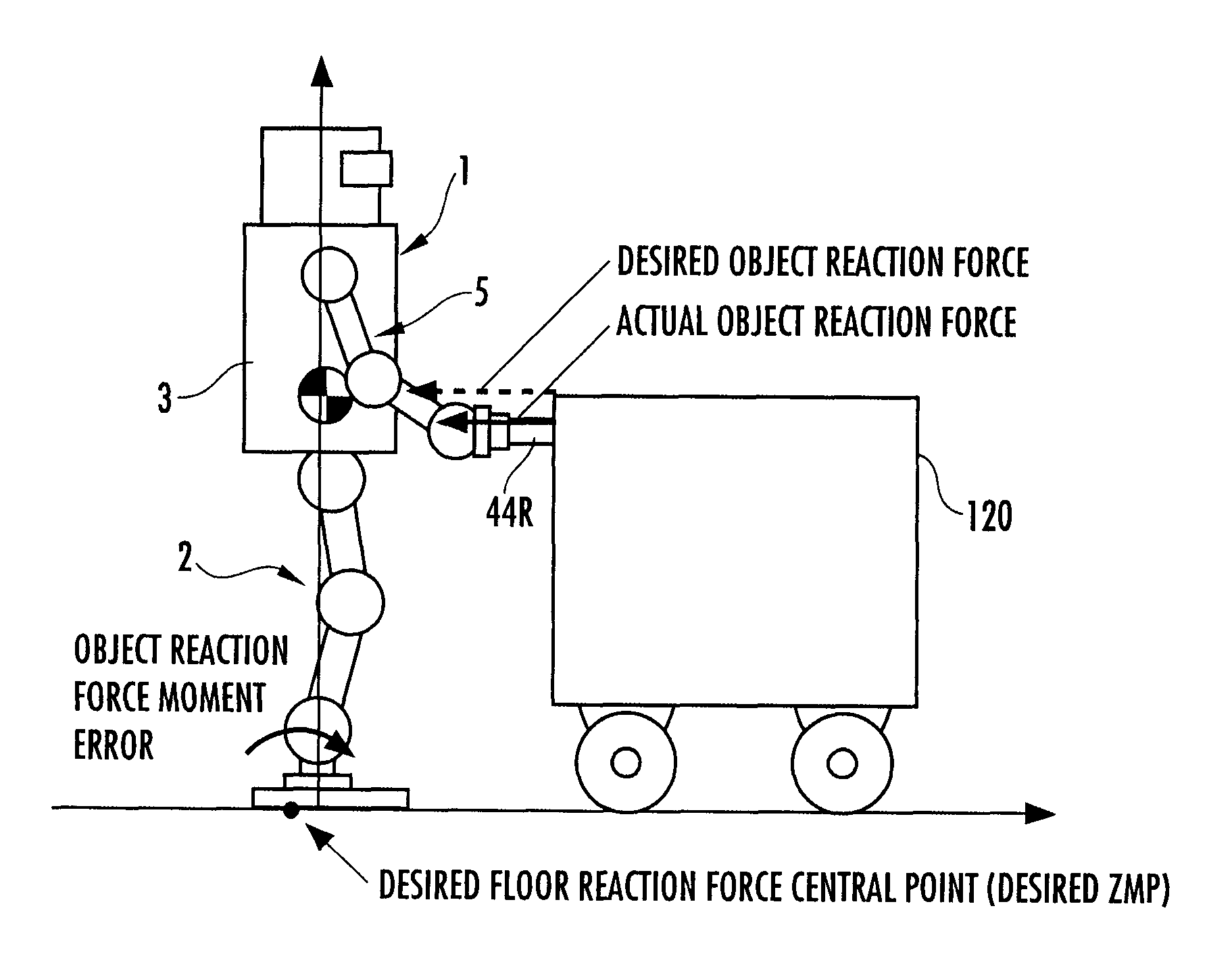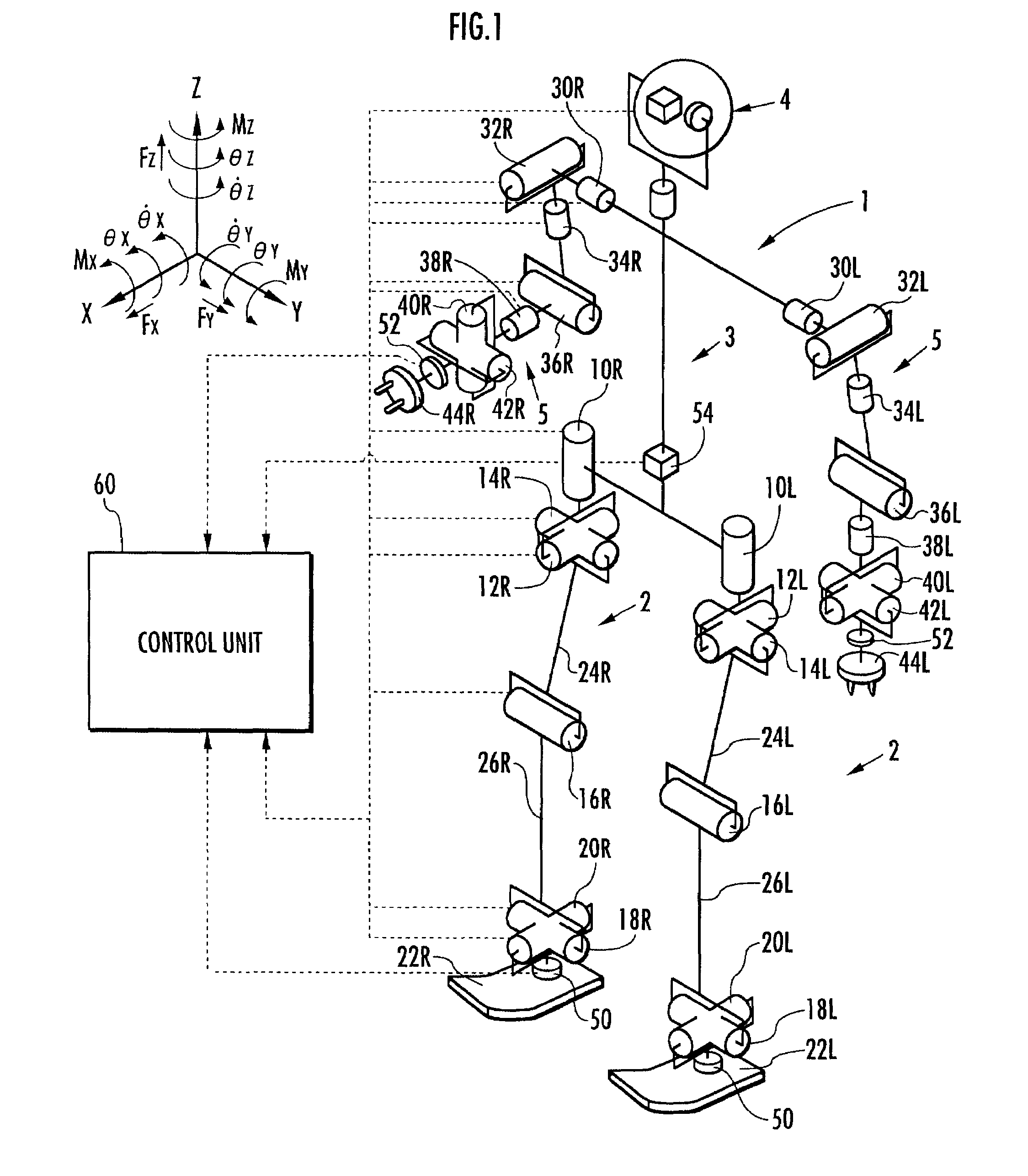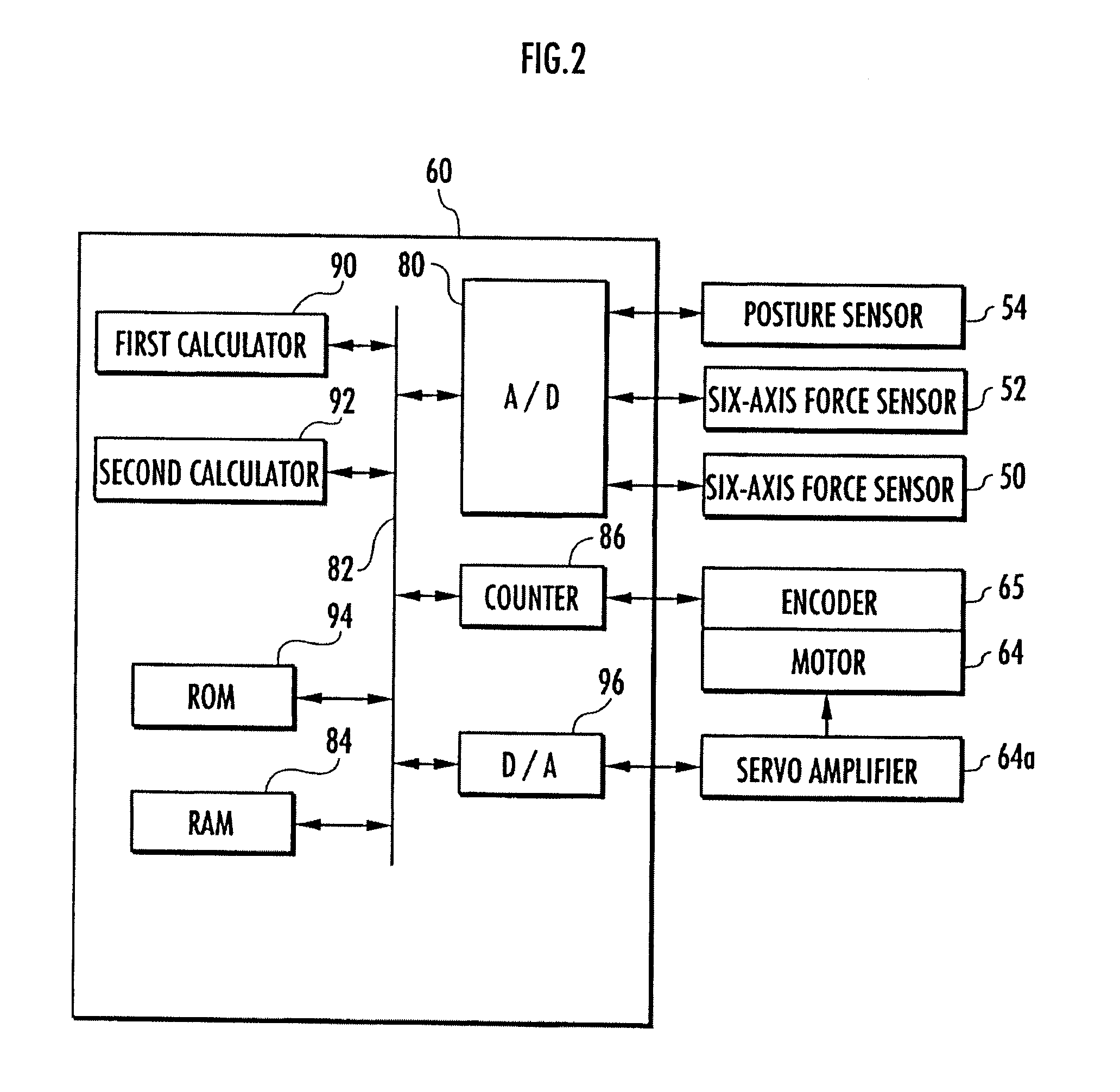Gait creation device of leg-type mobile robot
a technology of a creation device and a robot, which is applied in the direction of electric programme control, program control, instruments, etc., can solve the problems of difficult to move the object in accordance with the moving plan, inconveniences, and restrictions by restrictive conditions
- Summary
- Abstract
- Description
- Claims
- Application Information
AI Technical Summary
Benefits of technology
Problems solved by technology
Method used
Image
Examples
first embodiment
[0058]The following will explain in detail a gait generator 100 according to the present invention. FIG. 5 to FIG. 7 are flowcharts showing the processing by the gait generator 100. The gait generator 100 sequentially carries out the processing shown in the flowcharts of FIG. 5 to FIG. 7 at a predetermined calculation processing cycle.
[0059]First, in S01, a moving plan for an object 120 is determined. The moving plan to be determined here includes at least a moving plan for the object 120 for a predetermined future period (for a plurality of steps of the robot 1) from the current time. The moving plan is decided basically according to moving requirements of the object 120 (a design requirement on a method and timing for moving the object 120), and it is constituted of a position / posture trajectory (a time series of position and posture) of the object 120 or a parameter or a function expression or the like that defines the trajectory. For instance, if a moving requirement for the obj...
second embodiment
[0148]In the present embodiment, the initial divergent component q[0] has been analytically determined; alternatively, however, an initial divergent component of the normal turning gait that substantially agrees with a terminal divergent component of the normal turning gait observed from the supporting leg coordinate system of the gait that follows a normal turning gait following a current time gait may be determined by an exploratory method, as explained in, for example, the second embodiment in PCT international publication WO / 02 / 40224A1.
[0149]Returning to the explanation of the flowchart of FIG. 5, after the processing in S13 is carried out as described above, the procedure proceeds to S15 wherein a gait parameter of a current time gait is provisionally determined. The gait parameter includes a foot trajectory parameter that defines the foot position / posture trajectory in the current time gait, a ZMP trajectory parameter that defines a desired ZMP trajectory, and an object reacti...
PUM
 Login to View More
Login to View More Abstract
Description
Claims
Application Information
 Login to View More
Login to View More - R&D
- Intellectual Property
- Life Sciences
- Materials
- Tech Scout
- Unparalleled Data Quality
- Higher Quality Content
- 60% Fewer Hallucinations
Browse by: Latest US Patents, China's latest patents, Technical Efficacy Thesaurus, Application Domain, Technology Topic, Popular Technical Reports.
© 2025 PatSnap. All rights reserved.Legal|Privacy policy|Modern Slavery Act Transparency Statement|Sitemap|About US| Contact US: help@patsnap.com



